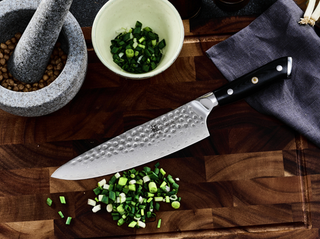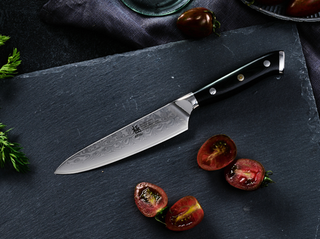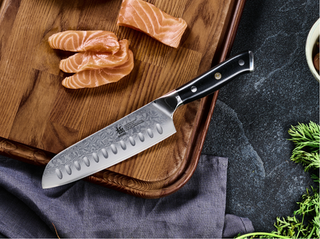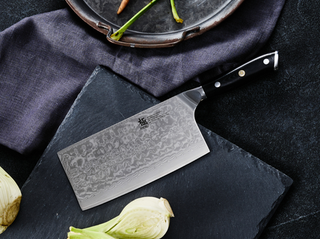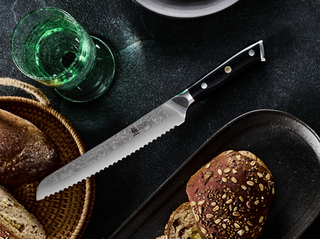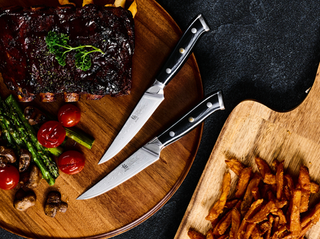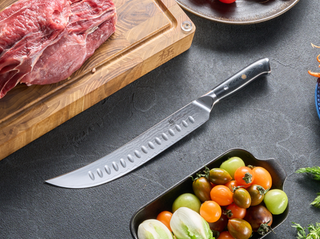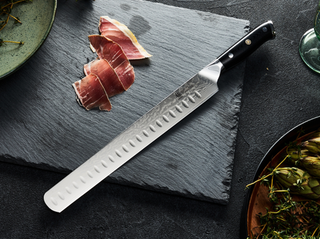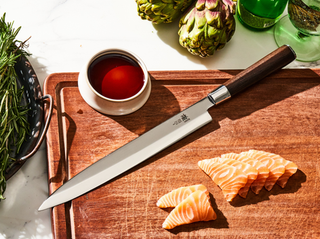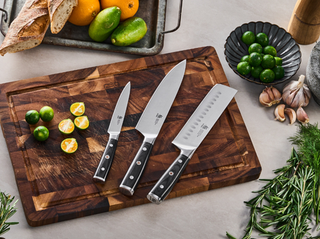What does full tang mean?
A full tang knife refers to a design in which the metal of the blade extends uninterrupted as one solid piece through the handle from the tip of the blade to the end of the handle. Unlike other knife constructions where the blade and handle materials are separate, a full tang design is one continuous piece of metal, providing immense strength.
The main benefits of this full tang construction are exceptional durability due to the lack of a break point between the blade and handle components, excellent weight distribution, handling balance since the mass is centered along the entire length, and increased durability due to the resilience of a single piece of forged steel.
In short, the full tang design significantly increases the knife's reliability, control, durability, and toughness compared to concentrating the density solely on the blade by allowing force to dissipate through the entire unified structure.
What is full tang knife?
A full tang knife is made from a single continuous piece of steel that forms both the blade and handle. This design maximizes the knife's strength and reliability.
Other knife designs that use separate blade and handle elements can loosen or break, but the full tang construction utilizes one solid, uninterrupted piece of metal from tip to end of the handle, enhancing durability by eliminating vulnerable joints or transition points.
The steel used in this knife provides excellent balance and control due to its centered weight distribution. The full tang design creates a resilient, perfectly weighted knife optimized for challenging cutting tasks and built to maintain high performance through years of intense usage. This is all thanks to the single solid steel piece that integrates the blade and handle into one seamless, non-compromised unit.
Why should knives have a full tang?
Knives with a full tang offer several benefits that make them desirable for various applications. This is especially advantageous in culinary.
A full-tang knife offers increased strength and durability as the metal of the blade extends through the entire handle. This design reduces the risk of the handle breaking off from the blade, which is critical for heavy-duty use or when applying significant force.
Full-tang knives usually have better balance, which helps with more controlled and precise cutting. In culinary settings, precision is crucial for chefs when making cuts.
Additionally, a full tang can provide added weight and force, making it easier to cut through tougher or denser materials with less effort from the user.
Full-tang knives have a longer lifespan due to their robust construction, making them a more economical choice over time. Additionally, they are generally safer to use. The blade and handle are one solid piece, reducing the risk of the blade dislodging and causing accidents.
Full-tang knives are considered a sign of quality craftsmanship in the knife industry and are often sought after by enthusiasts and professionals for their superior construction and performance.
Full-tang knives are preferred in situations where reliability, durability, and precision are paramount due to their advantages.
What is the difference between a full tang and no tang?
|
Feature
|
Full Tang Knife
|
No Tang Knife
|
|
Design
|
Blade extends through the entire handle.
|
Blade ends at or only partially extends into the handle.
|
|
Strength&Durability
|
High; less prone to breaking under heavy use.
|
Lower; more prone to breaking at the joint.
|
|
Balance
|
Well-balanced for control and comfort.
|
May lack balance, affecting precision.
|
|
Weight
|
Generally heavier, beneficial for some tasks.
|
Lighter, advantageous for certain applications.
|
|
Safety
|
Safer due to reduced risk of blade detachment.
|
Higher risk of blade separating from handle.
|
Tips for choosing full tang
Check that the handle scales fully extend to the end of the tang. There should be no gaps where the blade stops and the handle starts. This ensures the tang runs the full length of the handle for durability.
Look for a rat-tail tang. This means the tang tapers at the end of the handle into a narrow "rat-tail" shape rather than stopping bluntly. This makes for a stronger transition to the handle.
Choose thicker steel. A full-tang knife needs thicker, heavier-blade steel to balance out the full metal tang under the handle. Go for 0.25 inches or above.
Pick heavier handles. Wood, bone, micarta, and G-10 are good handle materials that have enough weight so the blade doesn't feel too blade-heavy.
Test balance and feel. The weight distribution should feel balanced in your grip. The full tang gives excellent balance to these knives.
Check reviews. Well-constructed full tang knives should be durable with no weak points. Pay attention to user reviews to check if poor construction issues aren't reported.

FAQ
What does a full tang mean?
A full tang means the metal blade extends through the entire handle, forming a single, solid piece. This design typically offers better balance, durability, and safety.
How can I tell if a knife is full tang?
Look for metal that runs through the entire handle and is affixed with rivets. If the knife feels unusually sturdy and balanced when you hold it, chances are it has a full tang.
Are full tang knives heavier than others?
Not necessarily. A well-designed full tang knife can feel balanced and comfortable, even if the steel core adds some weight. The goal is a steady balance point that reduces fatigue during long prepping sessions.
Is a full tang knife safer?
Generally yes. Because the blade and handle are a single piece, there’s less risk of the blade separating from the handle during use, which improves safety.
Do full tang knives have higher prices?
Price depends on multiple factors: materials, craftsmanship, brand, and overall durability. A quality full tang knife may cost more upfront but often saves money over time due to greater longevity and reliability.
When should I choose a full tang knife?
Ideal for demanding kitchen tasks that require control and durability, such as large-scale prep or heavy-duty chopping. The improved balance and rigidity help throughout extended sessions.
How does maintenance differ for full tang knives?
Maintenance is similar overall: hand wash when possible, dry thoroughly, and store properly. Pay attention to the joint between blade and handle; keep it clean and dry, and check rivets if applicable.
Hello, my name is Edward Thompson and I'm a writer who loves Japanese food and culture. I went to a great cooking school in New York and have been to Japan several times to learn more about Japanese cooking and knife culture. I know all about Japanese knives, from their history and how they're made to how to use them.
